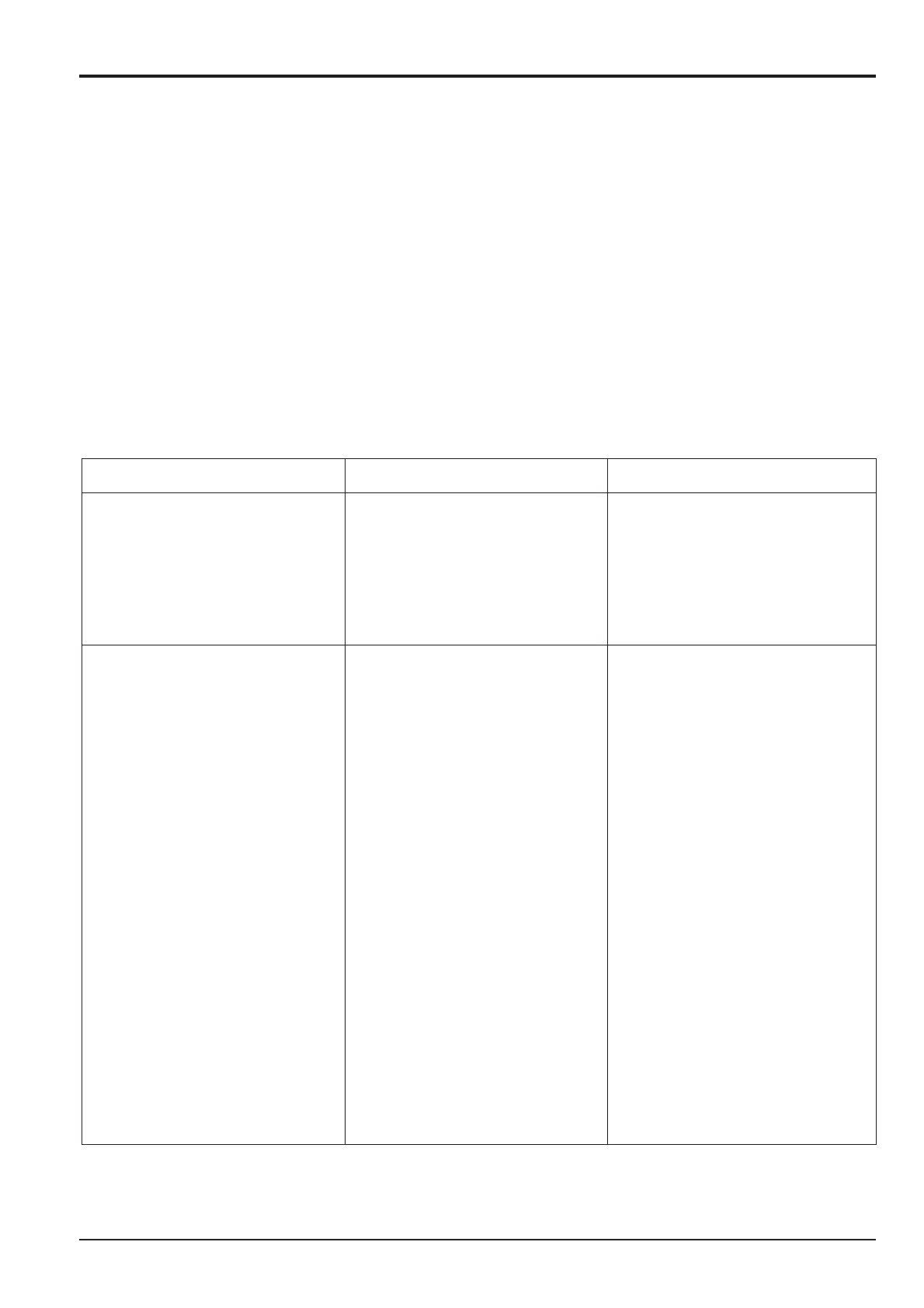12 - 1
Fault finding
As a first step towards locating a fault, carry out the
following checks.
1 Check the hydraulic filter for the presence of excessive
foreign materials. The nature of the foreign materials
could yield a clue as to the source of damage or wear.
2 Check the flow rate and condition of the oil drained
from the pump.
3 Check for abnormal sounds and vibration.
4 Check the pressure at each of the pump pressure test
points.
Section E Hydraulics
9803/6410
Section E
12 - 1
Issue 1
Hydraulic Pump/Regulator
Symptom
1 No oil is delivered from the
pump.
2 Low pump flow rate, or circuit
pressure does not build-up.
Possible cause
a Suction strainer or suction line is
blocked.
b The suction strainer is above the
oil level of the tank.
c The pump itself is faulty.
a Incorrect operation of various
control valves or hydraulic
motors served by the pump,
causing low flow rate or loss of
pressure.
b The sliding area of the pump is
worn, allowing a large amount of
pressurised oil to escape from
the drain port.
c Air is being drawn into the
pump.
d The suction strainer is blocked or
above the oil level of the tank.
e Excessive suction resistance.
Remedy
Clean the suction strainer or clear the
suction line.
Top up the hydraulic oil tank and
bleed air from the system.
Dismantle and renew worn or
damaged parts.
Renew or inspect and repair the
defective control valve or hydraulic
motor.
Dismantle the pump and, if possible,
polish or repair by lapping.
If repair is not possible fit new parts.
i Check the hydraulic connections
for looseness and tighten if
necessary.
ii Check the hydraulic lines and
seals for damage.
Clean the suction strainer or, if
necessary, renew. Top up the
hydraulic oil tank and bleed air from
the system.
Check for abnormal oil temperature or
viscosity, or other factors causing
cavitation. Take the necessary
remedial steps.

